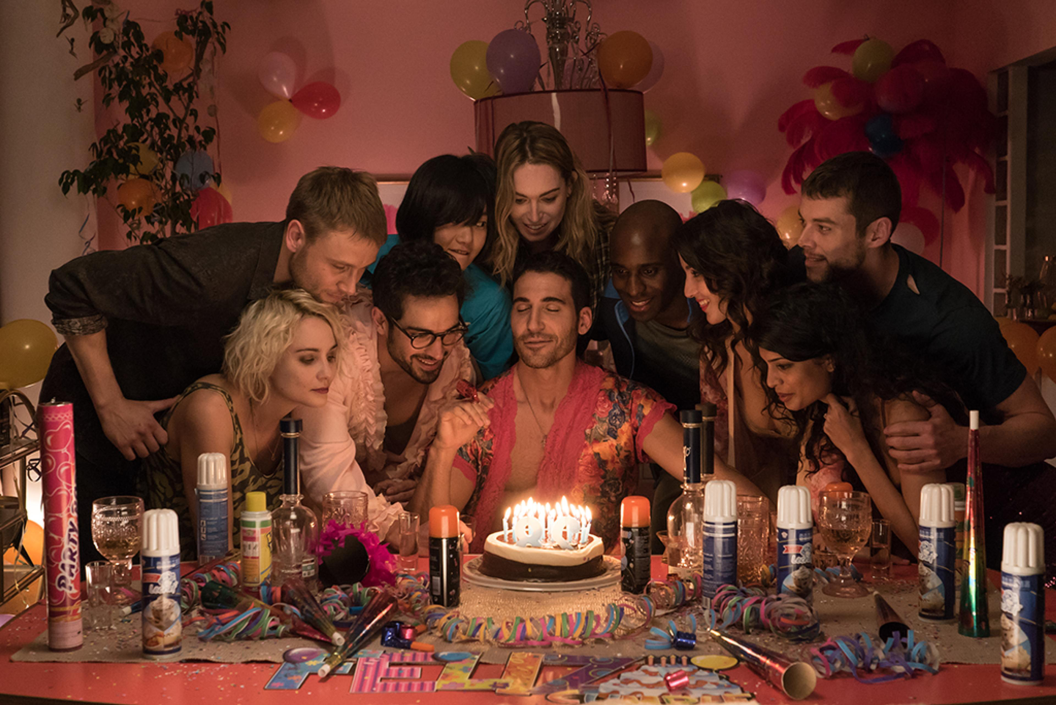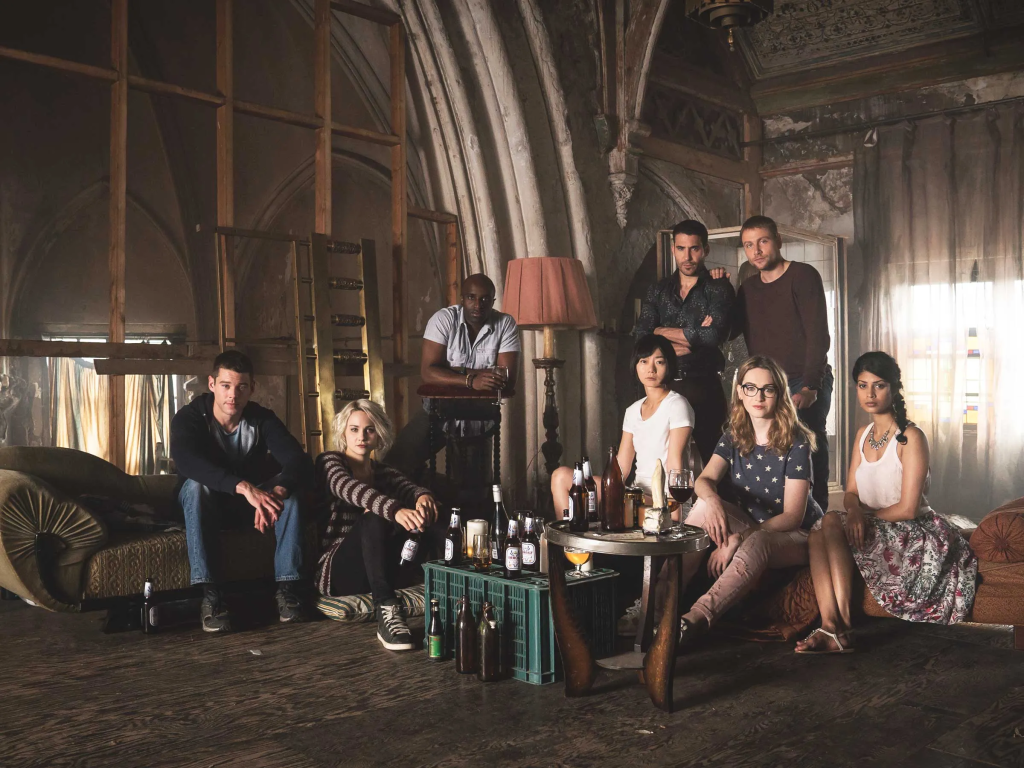
When Sense8 premiered on Netflix in summer 2015, one of the streaming platform’s first genre originals (even predating Stranger Things), it felt incredibly exciting. While Netflix was known for pushing boundaries aside and experimenting with form, even queer-friendly series like Orange is the New Black had earned rightful criticism for making the more diverse members of its large cast suffer more than others did (and everyone suffered on Orange is the New Black, to be fair). While the Sense8 characters definitely did not have a good time all the time, its largely queer cast of core characters seemed to experience joy around their identities more often than sorrow. Sense8 was also the reunion of trans sisters The Wachowskis and queer-friendly storyteller J. Michael Straczynski, giving them freedom of expression quite unlike anything they’d experienced before.
Sense8 had a short life, though, and Netflix isn’t likely to repeat this glorious experiment any time soon. Even though the total cost of the show was probably well under some of their recent original films, Sense8 lacked big names and required complicated production logistics. Season 2 producer Roberto Malerba claimed the budget per episode by season 2 was around $9 million an episode; it also had to be a show with a difficult buy-in for some of Netflix’s global markets; while it had an international cast, the point of the show was the joy of love, in all its forms — including queer love. Considering Disney has gotten into the habit of cutting queer storylines for all markets, and Netflix itself has been decreasing the variety of queer rep overall (this especially seems notable in the lower amount of queer elders represented in recent programming), it feels unlikely a show like Sense8 will be in Netflix’s ballpark for the near future, if ever.
Sense8 Is Still One of Netflix’s Best Ever (And They’ll Never Try It Again)

Today, especially, a show like Sense8 still feels as relevant as ever. Being queer wasn’t a side character feature or a secondary plot on Sense8: it was important from the very beginning. The first episode centers Nomi (Jamie Clayton), a trans woman in a loving, long-term relationship with her girlfriend Amanita (Freema Agyeman), as well as Lito (Miguel Ángel Silvestre), a closeted Mexican actor who wants to come out but who also wants to keep his career. Other characters have their own explorations of their sexualities, but Nomi and Lito really go through it in the first few episodes. Nomi is mistreated by her transphobic family (but eventually gets to use the skills of her other ‘sensates’ to escape), and Lito is forced to come out to his female co-star (who excitedly agrees to become his beard, in the end).
The center of the show, of course, was the core ‘sensate’: Nomi, Lito, Will (Brian Jacob Smith), Sun (Doona Bae), Riley (Tuppence Middleton), Capheus (Aml Ameen in season 1, Toby Onwumere in season 2), Kala (Tina Desai), and Wolfgang (Max). They were eight thirty-somethings who lived all over the world, connected psychically. The first season was a bit of a mysterious journey for the eight, as they tried to figure what in the world was happening to them, and handle their own lives at the same time. There was, of course, a sinister presence seeking them out (played by Terrence Mann), who they had to reckon with. Sense8 was also always funny and full of rich character moments; it wasn’t just a story on rails, as a lot of genre shows these days become. Even though it had serialization, it still went off on little divergences from time to time.
It’s a bit of comfort watch now, in 2025, when so many rights for trans and queer people seem under attack. We’re not disappearing from the airwaves, but it does feel like less of our stories are being told than, say, ten years ago. It’s hard to be the center of a story when the powers that be want you out of the picture entirely.
Sense8 Will Always Be an Indication of the Best of What Netflix Can Do

Netflix and many of the other streaming services have unparalleled freedom in what they can discuss and what they can show. They’re not held back by what’s allowed on broadcast and cable depending on the timeslot; they’ve fulfilled the promise of ‘It’s not TV, It’s HBO’ on much a larger scale than HBO probably could’ve envisioned when that tagline debuted in 1996. Sense8 gave creative freedom to The Wachowskis, two trans women coming out to the world, probably when they most needed it. Straczynski, who created the character of Ambassador Delenn who many queer fans see as a sort of trans allegory back when Babylon 5 was in the air, got to return to TV in a really remarkable fashion. Babylon 5 was the beginning of a storytelling continuum, focused on a consistent story arc while not sacrificing character development, and Sense8 was the logical culmination of that.
There’s part of me that wishes Netflix execs would slow down and take stock of the truly impressive parts of their catalog, like Sense8, before greenlighting another Electric State. While other streaming platforms like Apple seem to have picked up the slack on the genre TV side of things, Netflix is still the most influential of the platforms. It still has the ability to do good and provide much more representation, for all of us, with wild abandon. That was the promise of Sense8, in the end: we all matter, and we all deserve to live to our fullest, connected with the people who mean the most to us.
Sense8 is streaming on Netflix.
The post This Netflix Series Is Still One of Their Best Ever (But They’ll Never Try It Again) appeared first on ComicBook.com.

